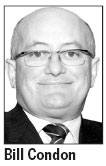HK emerges as global art hub
Updated: 2011-06-04 06:53
By Bill Condon(HK Edition)
|
|||||||||
The emergence of Hong Kong as an international art hub has largely occurred as a result of the efforts of a diverse but important group of collectors, consultants, curators, gallerists and founders of art institutions who over the years have laid strong foundations and championed local and international contemporary art.
Testimony to this is the increasing numbers of highly respected, international galleries that have chosen to open in Hong Kong during recent years, adding to the already large number of galleries situated in the city.
Probably the most notable of these, the Gagosian Gallery, opened at the beginning of this year. It has just unveiled the first solo exhibition of work by the highly acclaimed Richard Prince. The gallery, which is located in the Pedder Building in Central, boasts many of the art world's top tier artists and is supported by many of the most important collectors in the world.

Add to the mix the very strong prices being achieved at auction in Hong Kong, and you get the entirely accurate impression that there is a dynamic at play driving the city and its increasing significance in the international arena.
A recent example was the April sale at Sotheby's of an art collection owned by Belgian collector and philanthropist Baron Guy Ullens. The Ullens Collection is generally regarded as one of the most important collections of early Chinese contemporary art.
Despite apprehension within certain circles relating to the stability of an overheated Chinese art market and the effects that the sale of such a large and important body of work could have on it, the sale was a resounding success. A triptych by Chinese artist Zhang Xiaogang sold for HK$79 million, setting a new world record for contemporary Chinese art sold at auction. The work, "Forever Lasting Love", sold for more than double its highest estimate. It was just one of several record-breaking sales.
Another noticeable development in Hong Kong is the growing number of local and international collectors that are beginning to show greater interest in local artists. This is largely a result of the depth of talent that is emerging, which for many years was often overshadowed by mainland Chinese artists who commanded the attention of important collectors and institutions. However, astute collectors are becoming more aware of the value that exists among Hong Kong artists.
Another example of Hong Kong's progress is the Hong Kong International Art Fair. It has grown over its short four-year life to become the leading art fair in Asia and one of the most significant events on the international calendar.
Art HK11 ran from 26-29 May and was a resounding success both in terms of visitor numbers and sales. They were strong from the beginning and remained so throughout. Over 260 exhibitors from 48 countries displayed a wide range of works that continued to build on the fair's core values of quality and geographical diversity.
Several promising young artists representing the new guard of local artists were featured. One that caught the eye was Lee Kit, whose work is much more concerned much more with the act of creating rather than any physical painting.
The Art Futures section of the fair comprised of 45 newer galleries showcasing the work of artists under the age of 35. The artist judged to be the winner in this section was Gao Weigang, represented by the Beijing gallery Magician Space. He won a prize of $25,000 sponsored by Lane Crawford.
New to Art HK this year was Asia One, a section dedicated to Asian galleries showing solo exhibitions of some of the most promising artists who challenge and push the boundaries of what Asian art can be.
As in previous years, Art HK provided a strong platform for networking and cultural debate. The Asian Art Archive presented a series of discussions and presentations from a broad range of leading figures within the international art world. Guided tours were provided for VIP guests in Cantonese, Mandarin and English. As a result the Hong Kong International Art Fair has become a cultural landmark and an event that Hong Kongers can feel very proud about.
Informed opinion suggests that the Chinese and Asian art markets are forecast to continue to grow in the foreseeable future. The insatiable appetite, increasing levels of sophistication and growing numbers of mainland collectors will certainly continue to be an key element in sustaining strong growth in the art market.
Hong Kong is well placed to drive this growth and benefit culturally as well as commercially.
The author is communications director of the Irish Chamber of Commerce and CEO of Multitude Ltd.
(HK Edition 06/04/2011 page3)